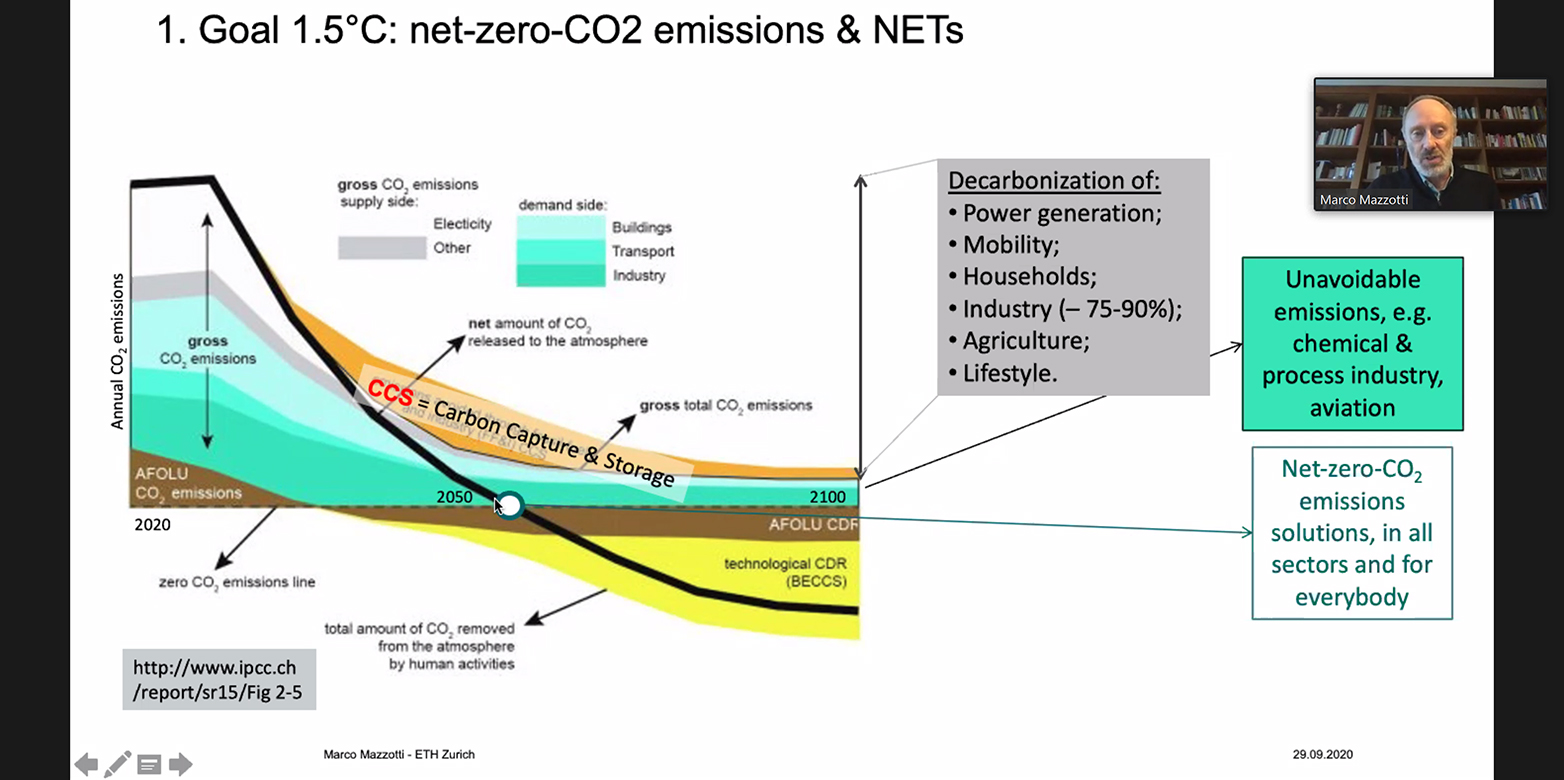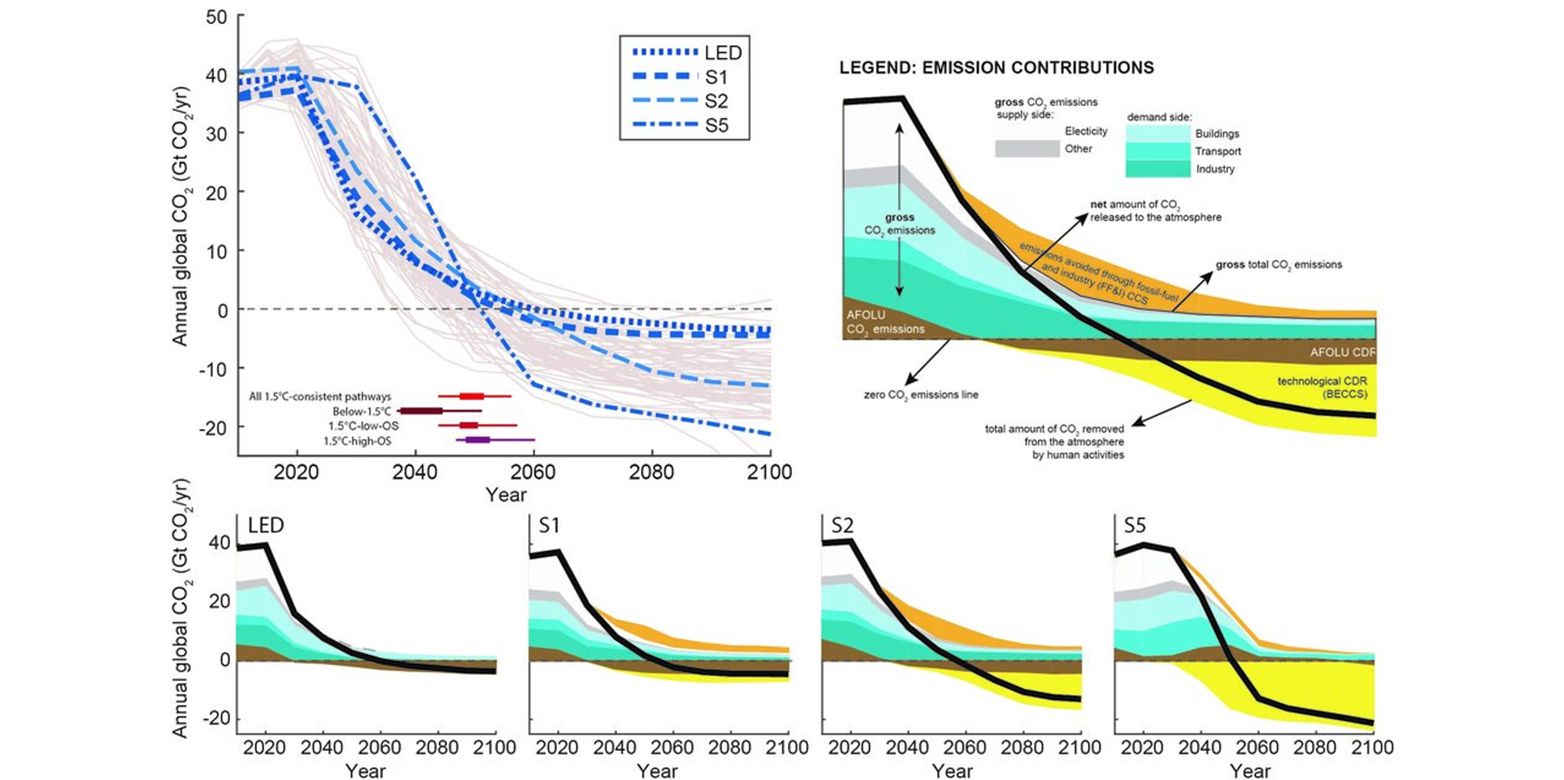Can we go net-zero any time soon, and how?
In the context of the 1.5°C goal set by the Intergovernmental Panel on Climate Change (IPCC) to limit global warming, decarbonizing sectors like transport and energy will ultimately have to be accompanied by negative emission technologies (NETs), which could compensate emissions from hard-to-decarbonize industries like aviation, the chemical industry and cement production. One of these technologies is carbon capture including Carbon Capture and Storage (CCS), Carbon Capture and Utilization (CCU) as well as Direct Air Capture (DAC). Prof. Marco Mazzotti from ETH Zurich Department of Mechanical and Process Engineering (D-MAVT) addressed these issues and the question "Can we get net-zero any time soon, and how?" in the first online ISTP colloquium.
by Andreas Felderer & Fabian Hafner
The term carbon capture refers to the process of extracting CO2 through technological means. This can be done at point sources, like coal power plants, but also from ambient sources, i.e. the atmosphere, as is being done by the ETH-spinoff external page Climeworks.
Once CO2 is captured, it can be stored (CCS) in underground geological formations such as saline aquifers sealed by an impermeable caprock. After that, natural geological processes further trap the CO2 in the formation. For instance, in the Sleipner gas field in Norway, CO2 is being safely sequestered since 1996.
Instead of storing the captured CO2, it can be utilized (CCU) in combination with H2 to produce energetically denser hydrocarbons like methane or even jet fuel. The biggest hurdles in economic utilization of CCU technology are the high energy costs of synthesizing the hydrocarbons and resulting low overall efficiencies. Furthermore, low- to zero-carbon electricity is needed to generate a net-positive environmental advantage over conventional fuels.
One of several promising ongoing projects is the "Northern Lights" in the North Seam where vast amounts of CO2 are scheduled to be stored in an underground aquifer starting in 2023. Such plants - in combination with a CO2 transportation infrastructure - can help with the goal of reaching net zero by providing large carbon sinks.
Another possibility to decarbonize, for example, aviation would be to capture CO2 directly from air (DAC) and utilize the CO2 to produce synthetic jet fuels. These fuels would have a net zero CO2 balance since they emit only as much carbon as was captured for production. The major problem related to CCU is the vast amount of carbon green electricity needed for this technology in order to produce fuels which have a lower CO2 balance than conventional fossil fuels.
In the generated discussion about the scalability of CSS and also the feasibility of CCU, Prof. Mazzotti argued that CCU technology should be considered an auxiliary solution and not a replacement for conventional fuel since it displays major economic and efficiency problems.
Regarding the scalability of CCS, he highlighted that even if it is not clear if CCS can be scaled to the extent needed for the 1.5°C goal, it seems to be the most promising option in terms of effectiveness, efficiency and cost.
We warmly thank Prof. Mazzotti for his interesting insights into the complex field of carbon capture! The interactive style of this webinar allowed an insightful discussion. We also want to welcome him as a new member of the ISTP.
To get a broadened sense of the ISTP and our topics of interest and past seminars visit our Colloquia page.

